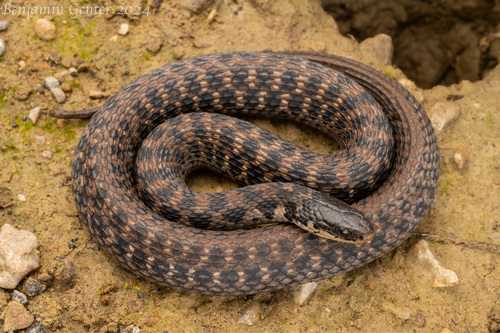
Kirtland's Snake
Kirtland's snake, with its vibrant belly and secretive habits, thrives in wetland ecosystems. This elusive species, a key predator of earthworms, plays a crucial role in maintaining soil health. Its unique coloration not only aids in camouflage but also adds a splash of color to its marshy habitat.
Length: 36 - 71 cm
Size
Brown, Red, Dark, Orange, Pink
Color
Near Threatened
Conservation Status
Decreasing
Population Trend
Characteristics
Clonophis kirtlandii, commonly known as Kirtland's snake, is a small, secretive species native to the wetlands and prairies of the central United States. It has a distinctive reddish-brown belly with black spots, aiding in camouflage. This non-venomous snake primarily feeds on earthworms and small amphibians.
Distribution Range of the Kirtland's Snake
Clonophis kirtlandii, commonly known as Kirtland's snake, is native to the Midwestern United States. Its geographical distribution primarily includes states such as Illinois, Indiana, Ohio, Michigan, and parts of surrounding states. It is considered a species endemic to this region.
Kirtland's Snake's Habitat
Environmental Conditions
Kirtland's snake typically inhabits wetland environments, including marshes, wet prairies, and floodplain forests. It is often found in areas with a high water table and prefers habitats with dense vegetation that provide cover.
Ecological Niche
This snake plays a role in the ecosystem by helping control populations of small amphibians and invertebrates, which make up its diet. Kirtland's snake is semi-aquatic and has adapted to living in environments that are seasonally flooded. It is also known to use crayfish burrows for shelter.
Copyright @ Nature Style Limited. All Rights Reserved.
 English
English